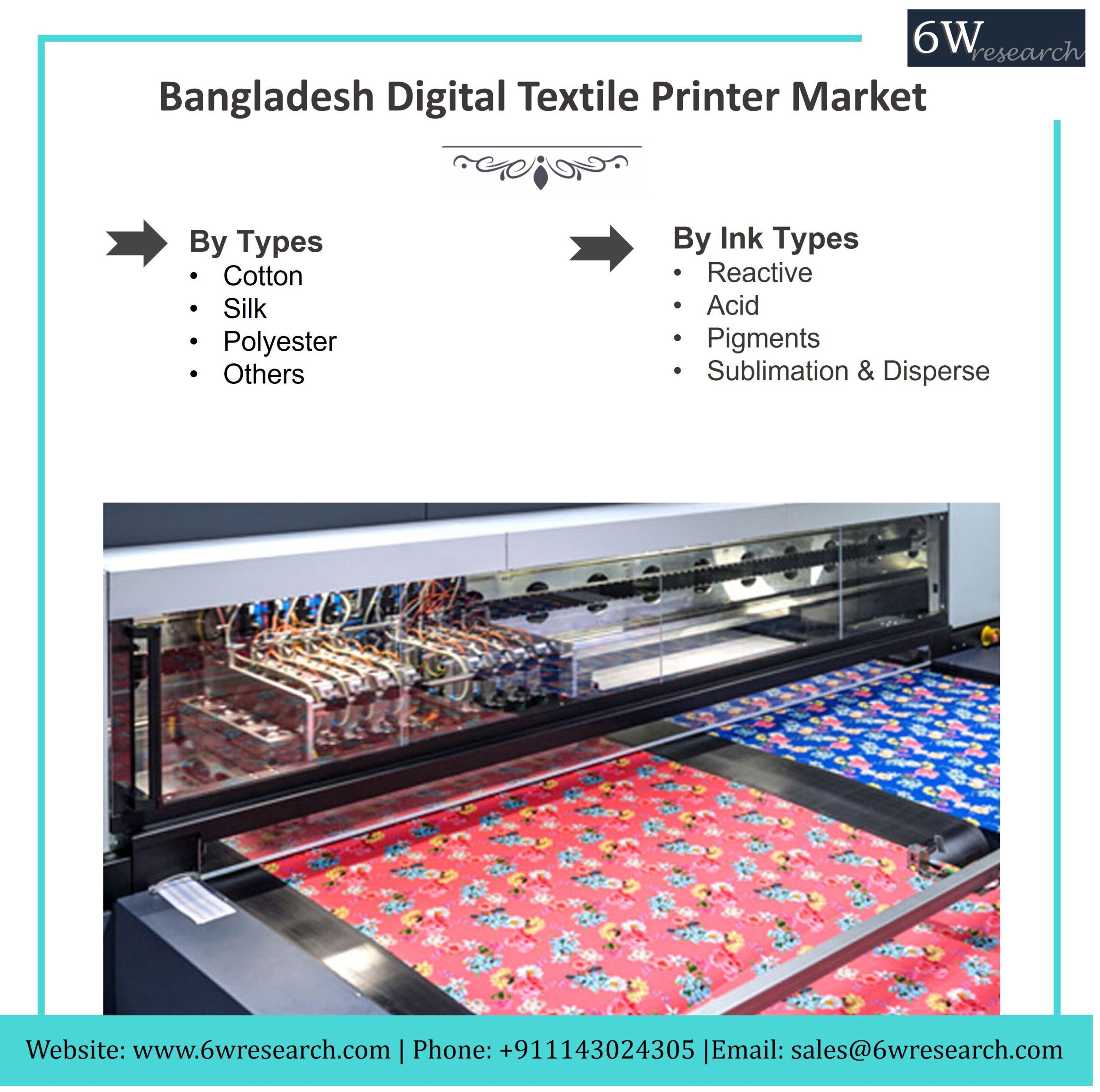Bangladesh Digital Textile Printer Market Overview
The Bangladesh Digital Textile Printer Market is growing due to increasing demand for customized and short-run textile Printer. The country has a large garment industry, and the adoption of digital Printer technology helps to reduce production lead times, increase efficiency, and reduce waste. However, the market still faces challenges such as a lack of skilled workforce, high initial investment costs, and limited access to finance for small and medium-sized enterprises. Overall, the digital textile Printer market in Bangladesh is expected to grow in the coming years due to increasing demand for digital Printer solutions and the government’s efforts to promote the adoption of technology in the textile industry.
Drivers of the Bangladesh Digital Textile Printer Market
The following are the key drivers of the Bangladesh digital textile printer market:
- Growing demand for customized and short-run textile Printer: The increasing demand for personalized and unique textiles is driving the growth of the digital textile Printer market in Bangladesh.
- Large garment industry: Bangladesh has a significant garment industry, which is fuelling the demand for digital textile Printer technology.
- Reduced production lead times: Digital textile Printer technology helps to reduce production lead times and increase efficiency in the textile Printer industry.
- Decreased waste: Digital textile Printer reduces waste compared to traditional Printer methods, which is driving its adoption in Bangladesh.
- Government initiatives: The Bangladesh government is promoting the adoption of technology in the textile industry, which is expected to drive the growth of the digital textile Printer market.
- Increasing awareness: The increasing awareness of digital textile Printer technology among textile manufacturers and consumers is driving the growth of the market in Bangladesh.
Key Trends of the Bangladesh Digital Textile Printer Market
The following are some of the key trends in the Bangladesh digital textile printer market:
- Adoption of eco-friendly Printer solutions: Companies in Bangladesh are increasingly adopting eco-friendly digital textile Printer solutions to reduce their environmental impact.
- Integration of AI and automation: The integration of AI and automation technology in digital textile Printer is becoming a key trend in Bangladesh. This helps to improve the efficiency and accuracy of the Printer process.
- Growing demand for direct-to-garment Printer: Direct-to-garment Printer is gaining popularity in Bangladesh as it allows for faster and more flexible Printer of small quantities.
- Expansion of digital textile Printer into new applications: The digital textile Printer industry in Bangladesh is expanding into new applications such as home décor, sportswear, and promotional products.
- Focus on quality and affordability: The digital textile Printer market in Bangladesh is focused on providing high-quality and affordable solutions to cater to the needs of the local textile industry.
- Investment in R&D: Companies in the digital textile Printer market are investing in research and development to enhance their product offerings and stay ahead of the competition.
Challenges faced by Bangladesh Digital Textile Printer Market
The Bangladesh digital textile printer market faces the following challenges:
- Lack of skilled workforce: The industry faces a shortage of skilled workers who are trained in digital textile Printer technology.
- High initial investment costs: The initial investment costs for digital textile Printer equipment and technology are high, which is a challenge for small and medium-sized enterprises.
- Limited access to finance: Many small and medium-sized enterprises in Bangladesh face difficulty accessing finance to invest in digital textile Printer technology.
- Limited technology awareness: There is limited awareness of digital textile Printer technology among textile manufacturers and consumers in Bangladesh, which is hindering its adoption.
- Quality control issues: Ensuring consistent and high-quality prints is a challenge in the digital textile Printer industry in Bangladesh.
- Limited availability of raw materials: The limited availability of raw materials and high prices of ink and other consumables can pose challenges to the growth of the digital textile Printer market in Bangladesh.
Growth of the Bangladesh Digital Textile Printer Market
The digital textile Printer market in Bangladesh is expected to grow in the coming years due to increasing demand for digital Printer solutions and the government’s efforts to promote the adoption of technology in the textile industry. The growing demand for customized and short-run textile Printer, the large garment industry, and the integration of AI and automation technology are expected to drive the growth of the market. However, the challenges such as a lack of skilled workforce, high initial investment costs, and limited access to finance for small and medium-sized enterprises will need to be addressed for sustained growth. Despite these challenges, the digital textile Printer market in Bangladesh is expected to grow at a steady pace in the coming years.
Bangladesh Digital Textile Printer Market Conclusion
In conclusion, the digital textile Printer market in Bangladesh is growing due to increasing demand for customized and short-run textile Printer and the government’s efforts to promote the adoption of technology in the textile industry. The market is driven by factors such as the large garment industry, reduced production lead times, and decreased waste. However, the industry faces challenges such as a lack of skilled workforce, high initial investment costs, and limited access to finance for small and medium-sized enterprises. Despite these challenges, the digital textile Printer market in Bangladesh is expected to grow at a steady pace in the coming years due to the increasing demand for digital Printer solutions and the integration of AI and automation technology.



